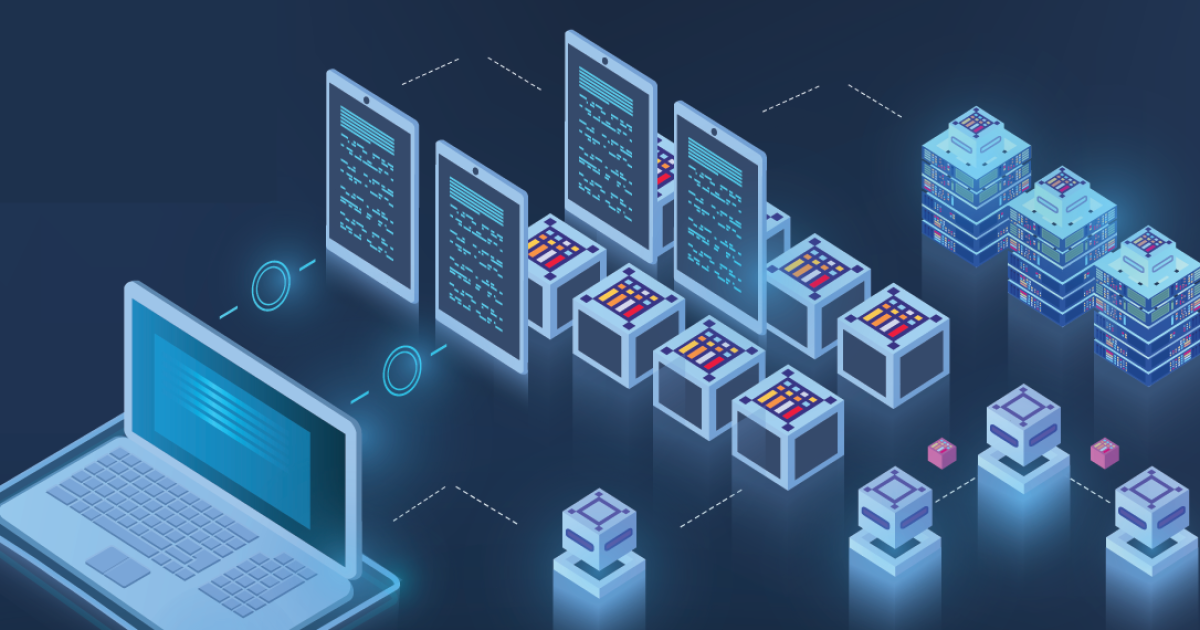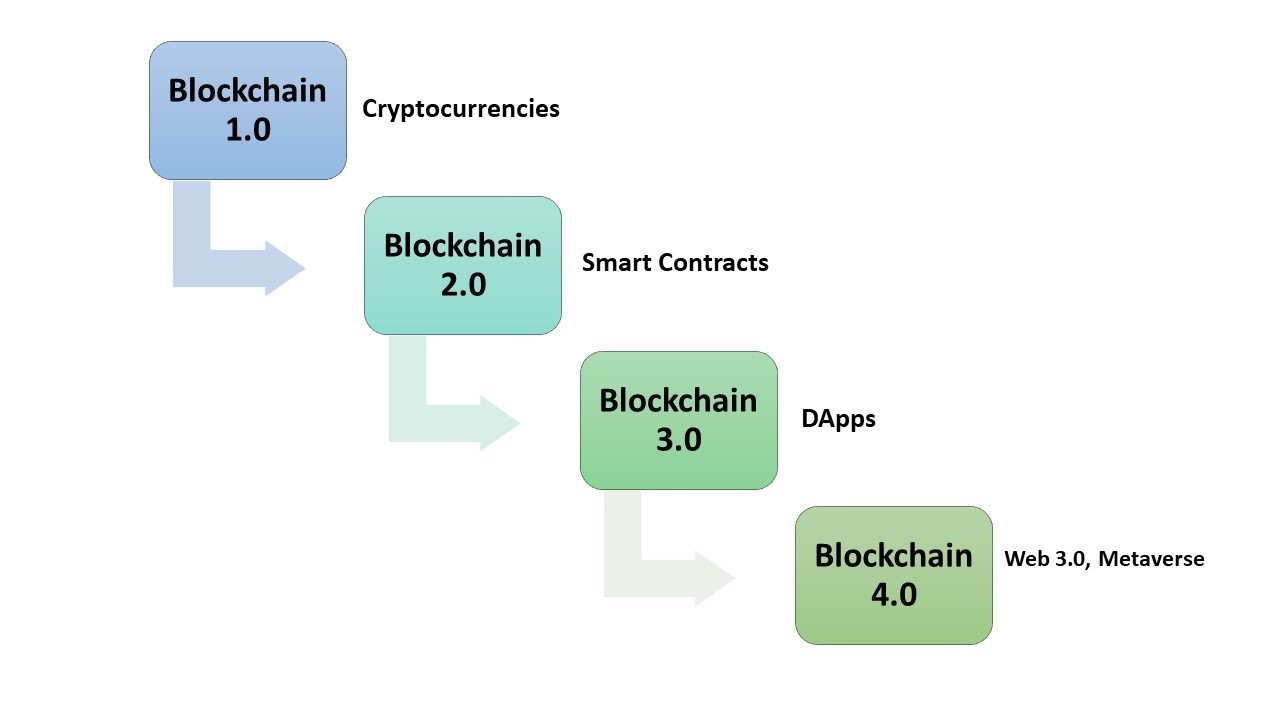Introducing Blockchain 4.0

The simplest and best definition of Blockchain technology is to think of it as electricity, you only see the applications, but you understand how important it is and know that there are many applications and products that can run on it.
But like any other technology, it went through stages and evolved as it developed and matured. We started with Blockchain 1.0 and now we are on Blockchain 4.0.
In the following article, we will explain each version of Blockchain:

Blockchain 1.0 – Cryptocurrencies
Blockchain’s first ever application was bitcoins. Blockchain has already established itself as the enabler of one “Decentralized Internet of Money” by operating cryptocurrencies. By offering transparency, accountability, immutability and security, Blockchain very soon triggered the influx of more cryptocurrencies and today we have more than 10,000 different cryptocurrencies in circulation.
Types of cryptocurrency
1. Central bank digital coin
2. Stable coins
3. Cryptocurrency (Bitcoin, Ethereum, Solana …)
4. Meme Coins (Elon Musk!)
*Maximum number of Bitcoin is 21 million coins, we have ~19 million in the market now
Blockchain 2.0 – Smart contracts
With Blockchain 2.0 came the era of smart contracts that helped #blockchain grow out of its original functionality to power cryptocurrencies.
What is a smart contract?
· Smart contracts are essentially automated agreements between the contract creator and recipient.
· Written in code, this agreement is baked into the blockchain, making it immutable as well as irreversible.
· They are usually used to automate the execution of an agreement so that all parties can be sure of the conclusion at once, without the need for intermediaries.
· They can also automate a workflow, which starts when certain circumstances are met.
An important advantage of a smart contract is the automation of tasks that traditionally require a third-party intermediary. For example, instead of needing a bank to approve a money transfer from client to freelancer, the process can happen automatically, thanks to a smart contract. All that is required is that two parties agree on one concept.
Smart contracts have gained widespread appeal because they are tamper-proof and reduce the costs of verification, exceptions, arbitration and fraud protection, as well as allowing for automated execution without permission. Smart contracts also allow for transparent data recording, which is easy to verify and gives the parties involved equal sovereignty over their agreements.
The very popular Ethereum is a 2nd generation blockchain. To advance the functionality of smart contracts, Ethereum is the Blockchain of choice for businesses across industries, especially supply chain, logistics and cross-border payments.
Although it is a second-generation Blockchain, Ethereum has continuously been at the forefront, scaling up its offerings to extend blockchain functionality across industries. Ethereum is a leader in everything from smart contacts to dApps, asset tokenization to DAOs, DeFi to NFTs.
Blockchain 3.0 – DApps
Blockchain 3.0 has been about decentralized applications (Dapps).
Decentralized applications (Dapps) are applications that run on a P2P network of computers instead of a single computer. dapps , have been around since the advent of P2P networks. They are a type of software designed to exist on the Internet in a way that is not controlled by any single entity.
With a frontend user interface, which calls to its backend smart contracts hosted on decentralized storage, DApps support various powerful blockchain use cases such as defi platforms, Crypto lending platforms, nft marketplaces, P2P lending and others.
Powered by new consensus mechanisms such as Proof of Stake, Proof of History and other, 3rd generation blockchain protocols focused on areas such as speed, security, scalability, interoperability and environmental friendliness.
Offering benefits such as transparency, scalability, flexibility and reliability, the global DApp market is expected to reach $368.25 billion by 2027. DApps have found applications across verticals such as gaming, finance, social media and crypto transactions.
Blockchain 4.0
Blockchain 4.0 is focused on innovation. Speed, user experience and ease of use of a larger and common mass will be the most important focus areas for Blockchain 4.0. We can divide Blockchain 4.0 applications into two verticals:
• Web 3.0
• Metaverse
Web 3.0
The internet is constantly changing, and we are heading towards the third generation of internet services, which will be driven by technological advances such as IoT, Blockchain and artificial intelligence. Web 3.0 is focused on having decentralization at its core, therefore Blockchain plays a critical role in its development.
Web 2.0 has been revolutionary in terms of opening up new possibilities for social engagement. But to take advantage of these opportunities, we as consumers have dumped all of our data into centralized systems, giving up our privacy and exposing ourselves to cyber threats. Web 2.0 platforms are managed by centralized authorities that dictate transaction rules while also owning user data.
The global financial crisis of 2008 exposed the cracks in centralized control, paving the way for decentralization. The world needs Web 3.0 – a user-overwhelming platform. Because Web 3.0 aims to create an autonomous, open and intelligent internet, it will rely on decentralized protocols, which Blockchain can provide.
There are already some third-generation blockchains designed to support web 3.0, but with the rise of Blockchain 4.0, we can expect the emergence of more web 3.0-focused blockchains that will have seamless interoperability, automation through smart contracts, seamless integration, and censorship-proof P2P storage – data files.
Metaverse
The dream projects of tech giants like Facebook, Microsoft, Nvidia and many more, Metaverses, are the next big thing for us to experience in the next few years. We are connected to virtual worlds across various touch points such as social engagement, gaming, work, networking and many more. Metaverse will make these experiences more vivid and natural.
Advanced AI, IoT, AR & VR, Cloud computing and Blockchain technologies will come into play to create the virtual reality spaces of the metaverse, where users will interact with a computer generated environment and other users through realistic experiences.
Centralized Metaverse implies more intense user engagements, deeper use of internet services and more disclosure of users’ personal data. All of these almost likely mean higher exposure to cybercrime. Giving power to centralized bodies to regulate, control and distribute users’ data is not a sustainable setup for the future of the Metaverse. Therefore, great emphasis has been placed on developing decentralized Metaverse platforms that will provide user autonomy. Decentraland, Axie Infinity and Starl, these are all decentralized Metaverses powered by Blockchain:
Blockchain 4.0’s advanced solutions can also help Metaverse users regulate their security and trust needs. Take the Metaverse gaming platform, for example, where users can buy, own and trade in-game items of potentially huge value. Proof of ownership through something as immutable and rare as NFTs will be necessary to prevent counterfeiting of these assets.
Blockchain 4.0 solutions can help with the following Metaverse development requirements:
• Decentralization
• Decentralized data management
• Safety
• Digital proof of ownership
• Digital collection of assets (such as NFTs)
• Control set
• Transfer of value through crypto
• Interoperability
Finally, Blockchain 4.0 will enable companies to move some or all of their current operations to secure, self-registering applications based on decentralized, trustless and encrypted ledgers. Businesses and institutions can easily enjoy the fundamental benefits of Blockchain.


